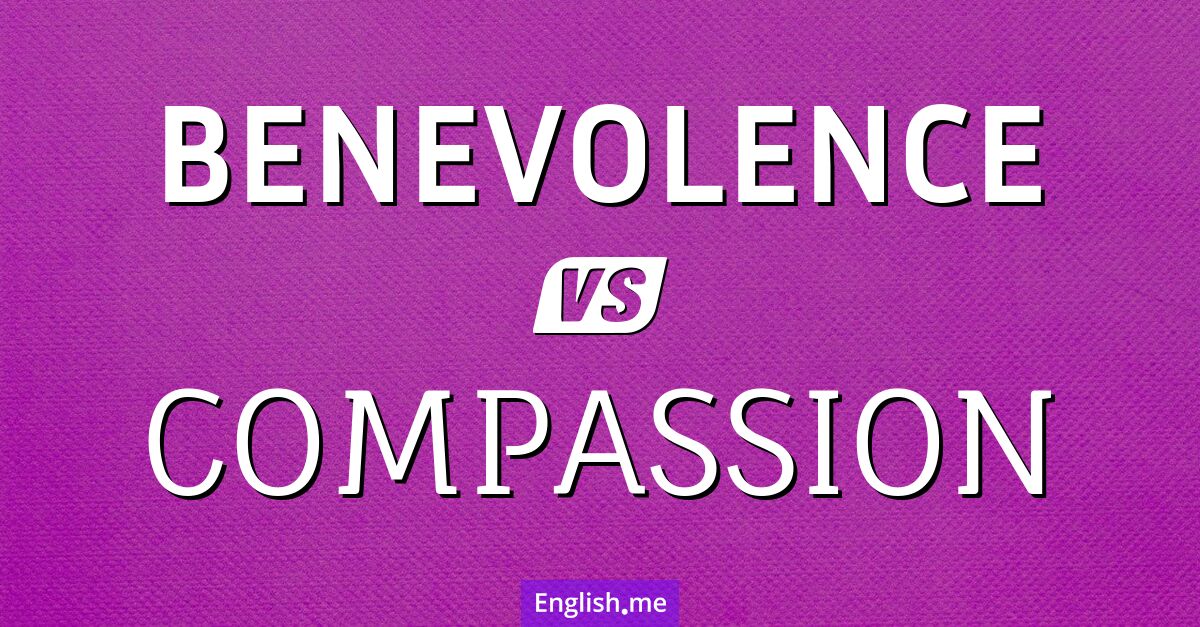"Benevolence" vs. "compassion": a subtle contrast of kindness
Reviewed and edited by  Lloyd Cooper 27/03/2025, 08:14
Lloyd Cooper 27/03/2025, 08:14
English.me team member

 What is similar?
What is similar?
Both "benevolence" and "compassion" involve kindness and concern for others. They are positive qualities that encourage individuals to act in the interest of others" well-being.
 What is different?
What is different?
"Benevolence" refers to a general desire to do good and promote happiness, often manifested through charitable acts or generosity. It emphasizes goodwill and the intention to benefit others. "Compassion" specifically involves feeling empathy towards others who are suffering and a desire to alleviate that suffering. While benevolence is about doing good deeds broadly, compassion is about responding emotionally to others" pain and taking action to help.
 Which one is more common?
Which one is more common?

 Examples of usage
Examples of usage
Benevolence- The community leader was admired for his benevolence and dedication to improving the town.
- Her benevolence was evident in the numerous scholarships she funded for underprivileged students.
- They were touched by the benevolence of strangers who offered help after the accident.
- She showed great compassion by listening to her friend's problems without judgment.
- His compassion for the victims of the flood drove him to volunteer for relief efforts.
- The nurse's compassion provided comfort to patients during their difficult times.

 English
English español
español française
française italiano
italiano deutsche
deutsche 日本語
日本語 polski
polski česky
česky svenska
svenska Türkçe
Türkçe Nederlands
Nederlands